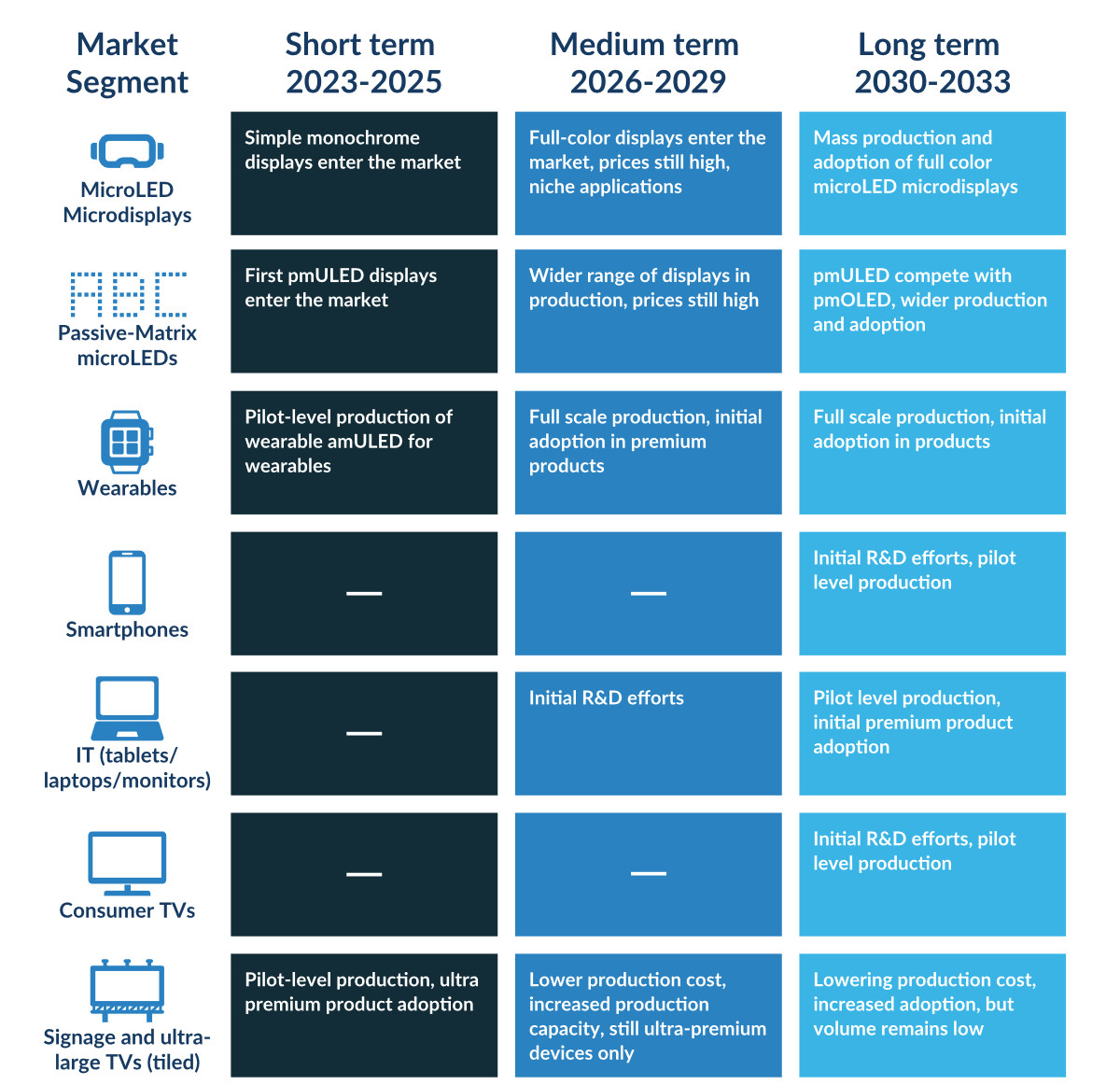
MicroLED TVs have been making waves ever since Samsung unveiled The Wall back at CES 2018 — but, unfortunately, we're still going to have to wait awhile for this potential OLED-killing competitor to make its way into our homes.
According to a new report out of the MicroLED Industry Association, we won't see widespread adoption of MicroLED TVs until the early 2030s.
It's not all bad for MicroLED, though: Analysts predict that MicroLED technology will first be introduced in wearables and XR headsets first in the next few years, followed by laptops and monitors sometime in 2026 or 2027.
TVs and smartphones will likely be the last form factors to adopt MicroLED displays, with the first consumer devices coming out in the early 2030s.
MicroLEDs and all the hype

Since as early as 2000, MicroLED technology has long enticed the display industry with the potential for incredible gains in terms of brightness, colors, and slimmer bezels. As the name suggests, MicroLED simply refers to microscopic LEDs, which can be more powerful than OLEDs and offer a much longer lifespan.
Although MicroLED TVs were long marketed as OLED killers, they come with several downsides as it currently stands, main among them being an extremely high asking price. Look no further than Samsung with its aforementioned highly immaculate yet incredibly expensive MicroLED TV. This behemoth of a 146-inch 4K display goes for the low MSRP of $220,000 (yes, it's really that expensive).
Asus also dove into the MicroLED world with its ProArt Cinema PQ07, an insane 135-inch 4K HDR display with 2,000 nits of peak brightness and a contrast ratio of 1,000,000:1. And before you ask, yes, it too costs $200,000.
Get instant access to breaking news, the hottest reviews, great deals and helpful tips.
That's pretty much the on-going problem with MicroLED. It's too expensive.
Currently, manufacturing small MicroLED displays between 10 and 14 inches across cost as much as $6,000 to $10,000, making them rather poor display alternatives to LED-LCD TVs that typically cost a few hundred dollars for full-size 65-inch screens.
Currently, manufacturing small MicroLED displays between 10 and 14 inches across cost as much as $6,000 to $10,000, making them rather poor display alternatives to LED-LCD TVs that typically cost a few hundred dollars for full-size 65-inch screens.
Thus, it makes sense that the the MicroLED Industry Association would predict in its report that the consumer TV market won’t see MicroLED models until at least 2030. The incredibly high prices for these displays will be far cheaper and easier on consumers when R&D efforts are finally achieved with sound (and more affordable) MicroLED products.
But don't count MicroLED out yet...
Although consumers may not be getting MicroLED TVs anytime soon, Apple has its eyes set on the technology with a potential Apple Watch Ultra upgrade as well as for the upcoming Vision Pro headset.
Custom MicroLED displays could also be making strides on several other Apple products, like the iPhone and iPad, well into the future — but you might not see them anytime in the next few years.
Can't wait for the future? Grab a QD-OLED TV like the Samsung S95C OLED, which has arguably the best picture and performance on the market and doesn't cost over $200,000.
More From Tom's Guide
- One of Samsung’s most gimmicky features could be the key to the Galaxy S24 Ultra’s salvation
- Samsung CU8000 TV review
- Samsung Galaxy Z Fold 5 colors: What to expect for Samsung’s next foldable

Ryan Epps is a Staff Writer under the TV/AV section at Tom's Guide focusing on TVs and projectors. When not researching PHOLEDs and writing about the next major innovation in the projector space, he's consuming random anime from the 90's, playing Dark Souls 3 again, or reading yet another Haruki Murakami novel.
